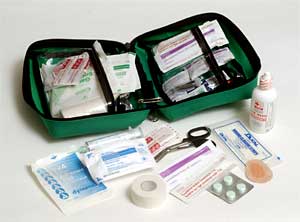Excellent late spring wetland conditions resulted in a strong waterfowl breeding effort in the Prairie Pothole Region of northwestern North Dakota this year, says Monte Ellingson, with the Crosby Wetland Management District, which is a unit of the National Wildlife Refuge System.
“Hunters are taking advantage of the good bird numbers now, with mallards, pintails, and gadwalls on many game straps,” Ellingson says. “And we have a surprising number of blue-winged teal still around for this time of the year. There’s no shortage of opportunities for hunters, but you do need to scout.”
Ellingson’s office is only five miles from the Canadian border, and he says that a large number of sandhill cranes have arrived from the north in the past two weeks.
“There is a lot of shallow water standing in fields in the area, which I think the cranes really like,” he says. “Lesser Canada geese are beginning to show up now, too. Nothing in really big numbers, but there has been some movement of birds into the state.”
Brian Prince with the North Dakota Game and Fish Department agrees, reporting that lesser Canada geese and snow geese are just starting to arrive in the Devils Lake region.
“We are seeing quite a few ducks and Canada geese, but I believe most of the birds were locally produced,” Prince says. “Mallards are beginning to congregate in larger groups in the area, and gadwall numbers are through the roof. Gadwalls appear to be on every wetland.”
Hunters traveling to the Devils Lake region are likely to encounter deteriorating wetland conditions, Prince adds, and they may discover that small, shallow water bodies that have produced quality hunts in past years are now dry.
“Diver hunters won’t be as impacted by the dry conditions, because the larger, semi-permanent and permanent wetlands still have plenty of water in them,” he explains. “The puddle ducks are starting to utilize these larger wetlands as well, making for some great mixed-bag hunting opportunities.”
Ducks and geese are also starting to utilize different food sources in the area, according to North Dakota hunter Mike Clement, switching from fields of small grains to soybeans and corn.
“There are plenty of opportunities to put together a good hunt if you’re willing to put on some miles and scout,” Clement says.
It has been a quiet start to the waterfowl season in south-central North Dakota, according to Mick Erickson with the Kulm Wetland Management District.
“We aren’t seeing the big concentrations of birds in the area yet, but local birds are providing fairly good opportunities for hunters,” Erickson says. “Wetland conditions are proving to be a challenge for hunters, too. The weather has been dry, so most of the smaller wetlands have mudflats around the edges.”
The outlook for this part of North Dakota is still positive, Erickson adds, as field hunting opportunities are expanding as the soybean harvest is completed and farmers begin combining corn.
“We have good food resources in the area and enough water in the semi-permanent wetlands to attract birds as the season progresses,” he says. “The lack of water in the smaller wetlands may help concentrate birds, too, which could help hunters.”



0 Comments